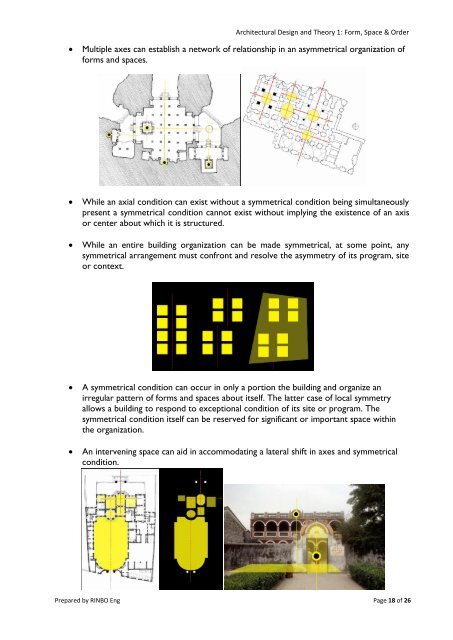Chapter 3: Form & Space - Architecture & Interior Design
Chapter 3: Form & Space - Architecture & Interior Design
Chapter 3: Form & Space - Architecture & Interior Design
You also want an ePaper? Increase the reach of your titles
YUMPU automatically turns print PDFs into web optimized ePapers that Google loves.
Architectural <strong>Design</strong> and Theory 1: <strong>Form</strong>, <strong>Space</strong> & Order<br />
Multiple axes can establish a network of relationship in an asymmetrical organization of<br />
forms and spaces.<br />
While an axial condition can exist without a symmetrical condition being simultaneously<br />
present a symmetrical condition cannot exist without implying the existence of an axis<br />
or center about which it is structured.<br />
While an entire building organization can be made symmetrical, at some point, any<br />
symmetrical arrangement must confront and resolve the asymmetry of its program, site<br />
or context.<br />
A symmetrical condition can occur in only a portion the building and organize an<br />
irregular pattern of forms and spaces about itself. The latter case of local symmetry<br />
allows a building to respond to exceptional condition of its site or program. The<br />
symmetrical condition itself can be reserved for significant or important space within<br />
the organization.<br />
An intervening space can aid in accommodating a lateral shift in axes and symmetrical<br />
condition.<br />
Prepared by RINBO Eng Page 18 of 26



